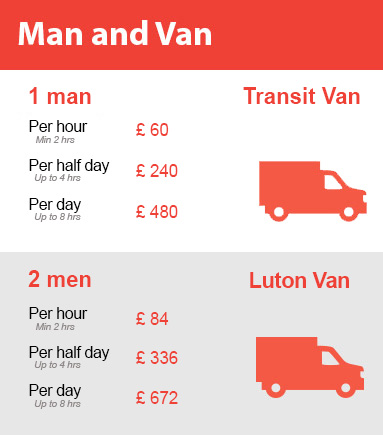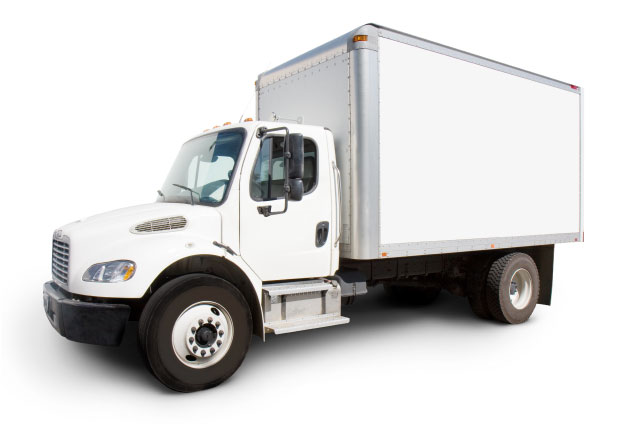Empower Yourself with Solo Heavy Lifting Skills
Posted on 13/06/2025
Empower Yourself with Solo Heavy Lifting Skills
In today's fast-paced world, the need to rely on oneself is becoming increasingly important, particularly when it comes to physically demanding tasks like lifting heavy objects on your own. Whether you're moving house, rearranging furniture, working on DIY construction projects, or simply trying to reorganize your garage, solo heavy lifting skills are a powerful asset. They're not just about brute strength--they involve technique, safety, awareness, and smart planning. In this comprehensive guide, you'll discover actionable tips, empowering techniques, and vital information to master the art of lifting heavy loads alone.

Why Learning Solo Heavy Lifting Techniques Matters
- Independence: Developing self-reliant lifting skills means you can manage tasks without always asking for help or waiting for others to be available.
- Cost-Efficiency: Reduce expenditures on moving services or professional help by learning how to move items safely on your own.
- Safety: Understanding proper solo lifting techniques drastically decreases your risk of injury.
- Empowerment: Conquering heavy lifting as a solo task instills confidence and a can-do attitude in other areas of life.
Understanding the Risks: Why Safe Lifting is Critical
Injury is the number one risk when attempting to lift heavy items without assistance. Common issues include strains, sprains, hernias, and severe back injuries. However, learning the correct way to lift--and recognizing your limits--will protect your health in the short and long term.
Common Lifting Injuries
- Lower back strains
- Muscle sprains
- Herniated disks
- Shoulder injuries
- Knee injuries
*Proper technique is crucial to avoid these pitfalls.*
The Foundation of Solo Heavy Lifting: Key Principles
Empowering yourself to lift heavy objects alone starts with understanding fundamental principles. Successful solo lifting relies on technique just as much as strength.
1. Know Your Limits
Never attempt to lift an object that's potentially too heavy or awkward for you. It's better to recognize your boundaries than to risk serious harm.
2. Plan Each Move
Before you even bend down, examine the object's size, shape, and weight. Think through your route, check for any obstacles, and ensure the destination spot is clear.
3. Use Proper Body Mechanics
- Keep your back straight--avoid rounding or arching it.
- Bend your knees and squat close to the object.
- Lift with your legs, not your back.
- Hold objects close to your body to reduce strain.
- Avoid twisting while lifting or carrying heavy items.
Essential Techniques for Safe Heavy Lifting
There are several proven methods to master when you want to be empowered by solo lifting skills.
The Power of the Squat Lift
Squat lifting is the gold standard for picking up heavy loads without risking injury.
- Stand close to the object with feet shoulder-width apart.
- Bend at your knees and hips, not your waist.
- Keep your back straight and grasp the object firmly.
- Push through your heels to rise, keeping the object close to your torso.
This lifting style leverages leg strength instead of overburdening your back.
Pivot, Don't Twist
When you need to change direction, *pivot* your feet, rather than twisting your upper body. This reduces pressure on your spine and knees.
The Slide Method for Bulky Objects
Instead of picking up extremely heavy or awkward items, try sliding them on blankets, towels, or sliders. This technique is particularly useful for moving furniture or large appliances.
Breaking Down the Load
Empower yourself to break down the job. Whenever possible, dismantle larger items into smaller, more manageable pieces before moving. Remove drawers, shelves, or detachable parts to make the load lighter and easier to handle.
Essential Tools to Empower Your Solo Lifting Abilities
Smart heavy lifting tools can transform near-impossible solo tasks into manageable projects.
- Lifting straps: Help distribute the weight and offer better grip.
- Hand trucks or dollies: Ideal for boxes, appliances, and furniture.
- Furniture sliders: Reduce friction when moving heavy items across floors.
- Moving blankets: Protect items and aid in sliding objects safely.
- Work gloves: Guard your hands from scrapes and improve grip.
Investing in these accessible, budget-friendly tools can dramatically boost your solo heavy lifting skills.
The Power of Preparation: Strengthening Your Body
While technique is essential, physical fitness supports your ability to safely manage heavy loads alone. Regularly incorporating a few simple exercises into your routine can make a significant difference.
Top Exercises to Enhance Your Lifting Strength
- Deadlifts: Strengthen your lower back, glutes, and legs, directly mimicking the movement involved in lifting heavy objects.
- Squats: Build the foundational leg power needed for safe lifting.
- Core exercises: Planks, bird-dogs, and leg raises stabilize your midsection, supporting your spine during heavy lifts.
- Farmer's walks: Carrying heavy weights in each hand increases grip, forearm, and core strength.
Note: Consult a fitness professional before starting a new exercise regime, especially if you have pre-existing conditions.
Step-by-Step Guide: How to Lift Heavy Objects Alone Safely
Follow this detailed process to maximize safety and efficiency when tackling solo heavy lifting challenges.
- Assess the Load: Ensure the object is not too heavy or unwieldy for one person.
- Clear Your Path: Remove clutter, rugs, or obstacles from your intended route.
- Gear Up: Wear gloves, non-slip shoes, and any appropriate lifting aids.
- Position Yourself Properly: Face the object head-on, feet shoulder-width apart.
- Bend Your Knees: Lower yourself by squatting, not by bending at the waist.
- Grip Securely: Place your hands firmly under or around the object.
- Lift Smoothly: Extend your legs, keeping your back straight, while raising the object.
- Hold the Load Close: Keep the item against your torso for maximum control.
- Utilize Tools if Needed: For longer transports, switch to a dolly or use sliders.
- Set Down with Care: Bend your knees and lower the object gently into place.
Patience is key; rushing leads to mistakes and possible injury.
When to Ask for Help: Recognizing Your Limits
True empowerment means knowing when to seek assistance. If an object is:
- Too heavy for a safe solo lift (generally over 50 lbs/23 kg for most adults),
- Awkwardly shaped or has no good handholds,
- Potentially hazardous (e.g., glass, chemicals),
Top Tips for Avoiding Injuries While Lifting Alone
- Warm up before lifting (dynamic stretches and light movement).
- Keep your head up and neck in a neutral position to avoid strain.
- Don't overexert--take breaks if you need to move multiple items.
- Stay hydrated; dehydration increases muscle fatigue and injury risk.
- If you feel pain or dizziness, stop immediately.
Empowerment Beyond the Physical: The Psychological Benefits of Lifting Alone
Learning and perfecting your solo heavy lifting skills does more than just strengthen your body--it's an exercise in mental toughness, self-sufficiency, and confidence. Each time you move a hefty object on your own, you reinforce your ability to tackle challenges in all areas of life.
Building Resilience and Self-Reliance
- Boosts self-esteem by proving what you can achieve independently.
- Reduces reliance on others, saving time and logistics headaches.
- Fosters a growth mindset--by learning from obstacles and mastering new skills.
Solo Heavy Lifting in the Modern Age: Not Just for Movers
Empowering yourself with solo heavy lifting techniques isn't just for professional movers or gym-goers. It's an invaluable skill for everyone--students, office workers, homemakers, athletes, and retirees. Everyday life presents numerous opportunities where these skills become indispensable.
Real-Life Scenarios:
- Moving appliances or furniture during home renovations
- Transporting boxes or equipment at work
- Working on gardening or landscaping projects
- Handling deliveries or storage organization
The more you practice and perfect your technique, the more seamless these tasks become.

Frequently Asked Questions About Solo Heavy Lifting Skills
How can I tell if an object is too heavy to lift alone?
If you can't nudge the object with your foot, or it feels heavier than what you can comfortably squat and rise back up with, it's best to either break down the load or ask for help.
Can I hurt my back even with good technique?
While correct technique significantly reduces the risk, no method is foolproof. Always listen to your body, practice strengthening exercises, and avoid overexertion.
Are there ways to make heavy items lighter or easier to carry?
Absolutely! Disassembling items, emptying what you can, and using tools such as dollies, straps, and sliders can make even the heaviest loads manageable for a solo lifter.
Should I wear a weightlifting belt for heavy household jobs?
A belt can provide core stability for very heavy lifts but isn't a substitute for good technique and should be used judiciously.
Conclusion: Take Charge With Your Solo Heavy Lifting Skills
Mastering solo heavy lifting techniques is a practical, empowering, and highly transferable life skill. By committing to safety, practicing effective lifting methods, and gradually strengthening your body, you'll be able to manage challenging tasks with confidence and independence.
Remember: preparation, proper equipment, body awareness, and knowing when to ask for help are crucial cornerstones of *safe and effective solo heavy lifting*. With the right mindset and actionable knowledge, you'll transform daunting heaviness into a manageable, even rewarding, challenge.
Empower yourself today--develop your solo heavy lifting skills and experience the freedom and satisfaction of true self-reliance!





